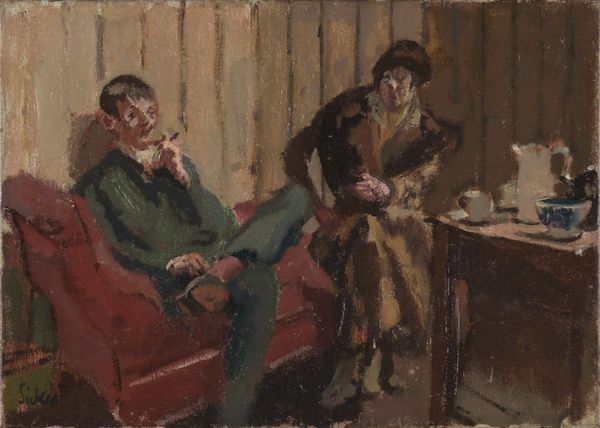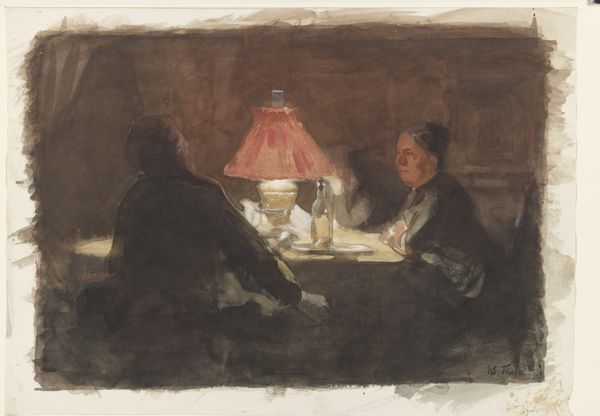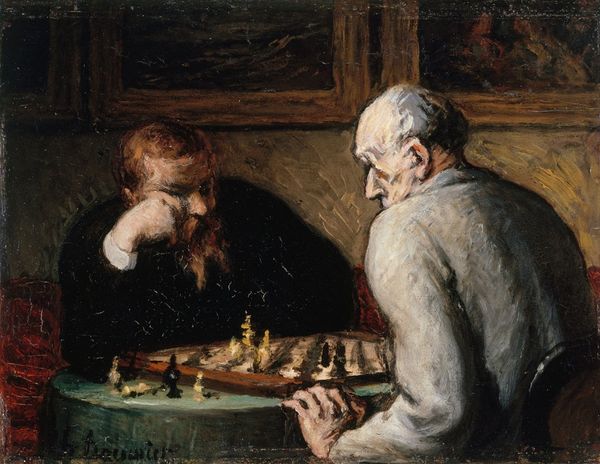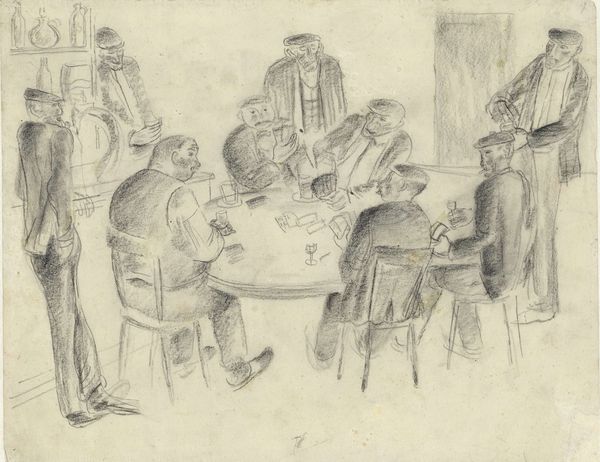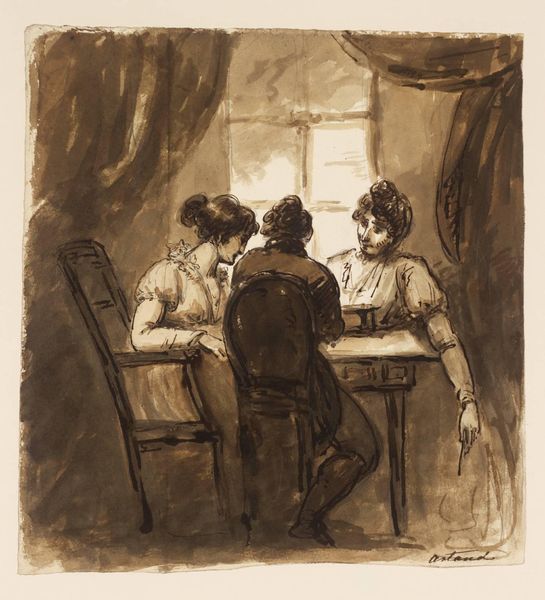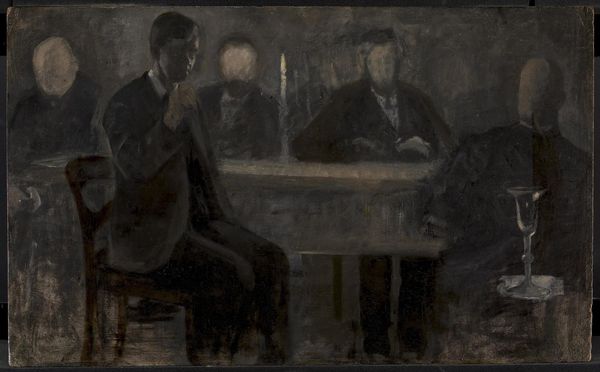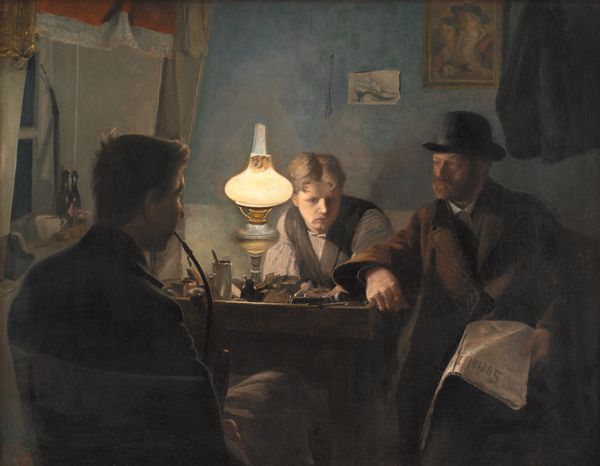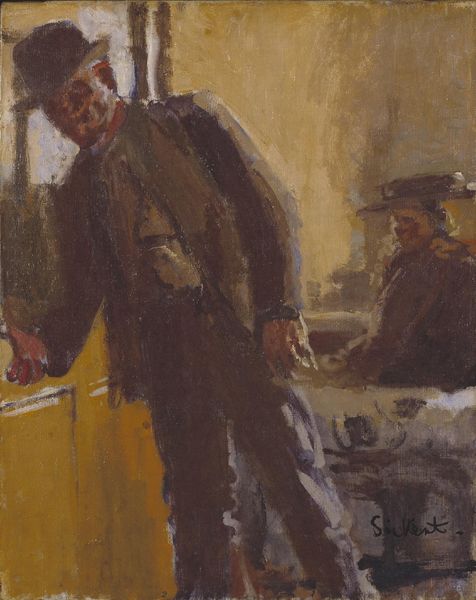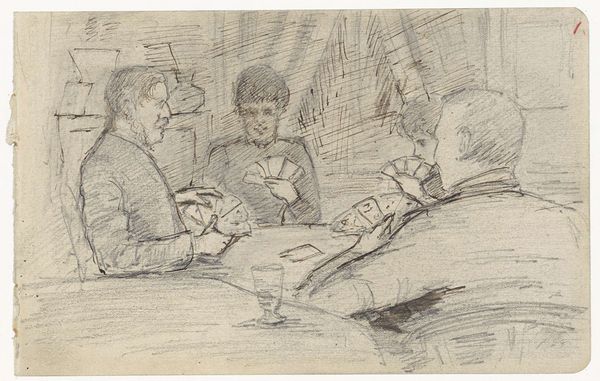
Copyright: Public domain
Curator: Isaac Israels painted "The Chess Players" in 1922 using oil paint and pastel. What are your initial thoughts on this artwork? Editor: A muted, contemplative atmosphere. The soft pastels create a diffused light, drawing attention to the players' postures, slumped in thought. There is something serene, yet burdened in the image's overall affect. Curator: Certainly. Israels, though associated with Impressionism, seems to tap into a more Realist genre painting tradition here, capturing an intimate moment of middle-class leisure. It begs the question: what were the social dynamics at play? Who were these men, and what might this game symbolize for them in the interwar period? Editor: Symbolism is secondary for me in experiencing the image. The composition, the placement of the chessboard at the center—almost an altar—suggests an exploration of geometrical space, despite the hazy rendering of the forms. I keep returning to the tonal range. The limited palette and layering create depth and dimension, abstracting the concrete forms within the scene. Curator: It is difficult not to view such depictions through the lens of the time. The intense intellectual pursuit of chess amidst the backdrop of societal change certainly reflects anxieties around masculinity and intellectual prowess within a shifting social landscape. We might question: does the enclosed, domestic space suggest the confines of tradition? Editor: An interesting proposition, though I also wonder about his technique here. Observe how Israels masterfully guides the eye using lines and light, establishing a complex yet harmonious visual structure. This, for me, transcends any specific political or sociological context, touching on universal aesthetic values. Curator: I appreciate your emphasis on the aesthetic qualities, though the socio-political context gives additional layers to an image created during a tumultuous period of history, wouldn’t you agree? Editor: I suppose our viewpoints differ in emphasis, as they often do when engaging with art. I focus primarily on its intrinsic visual architecture; you find meaning within a broader cultural context. Curator: Exactly. And hopefully, our dialogue invites others to form their own perspectives, balancing what's internal to the art with the realities surrounding its creation.
Comments
No comments
Be the first to comment and join the conversation on the ultimate creative platform.

